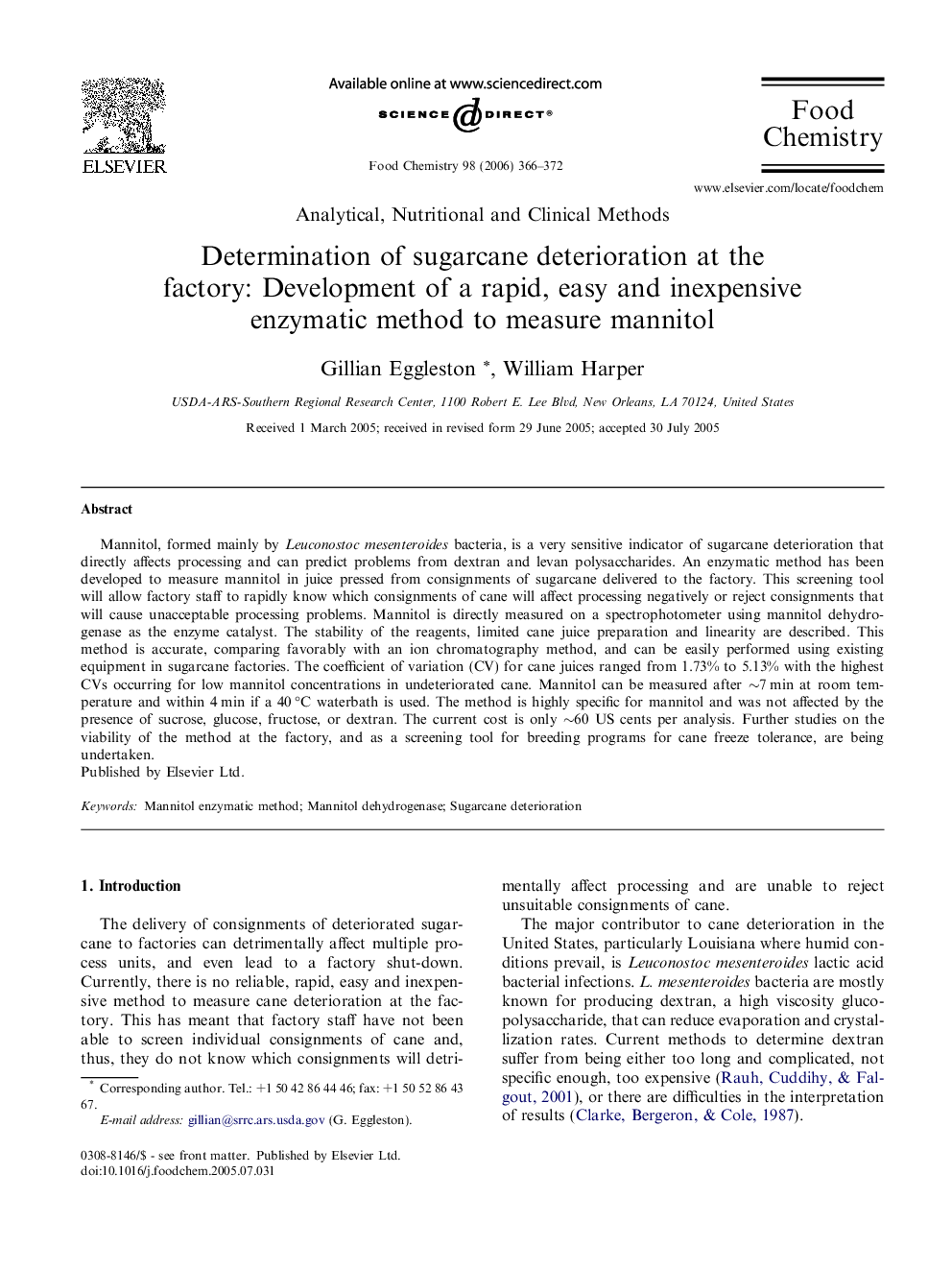| Article ID | Journal | Published Year | Pages | File Type |
|---|---|---|---|---|
| 1191047 | Food Chemistry | 2006 | 7 Pages |
Mannitol, formed mainly by Leuconostoc mesenteroides bacteria, is a very sensitive indicator of sugarcane deterioration that directly affects processing and can predict problems from dextran and levan polysaccharides. An enzymatic method has been developed to measure mannitol in juice pressed from consignments of sugarcane delivered to the factory. This screening tool will allow factory staff to rapidly know which consignments of cane will affect processing negatively or reject consignments that will cause unacceptable processing problems. Mannitol is directly measured on a spectrophotometer using mannitol dehydrogenase as the enzyme catalyst. The stability of the reagents, limited cane juice preparation and linearity are described. This method is accurate, comparing favorably with an ion chromatography method, and can be easily performed using existing equipment in sugarcane factories. The coefficient of variation (CV) for cane juices ranged from 1.73% to 5.13% with the highest CVs occurring for low mannitol concentrations in undeteriorated cane. Mannitol can be measured after ∼7 min at room temperature and within 4 min if a 40 °C waterbath is used. The method is highly specific for mannitol and was not affected by the presence of sucrose, glucose, fructose, or dextran. The current cost is only ∼60 US cents per analysis. Further studies on the viability of the method at the factory, and as a screening tool for breeding programs for cane freeze tolerance, are being undertaken.
